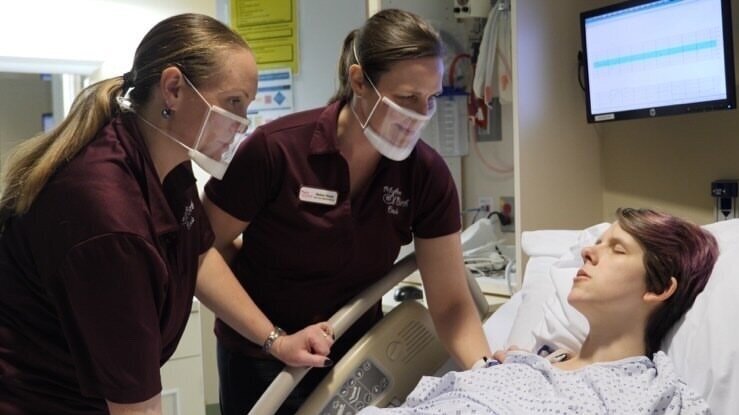Can transparent masks help overcome communication barriers? These researchers think so.
“Could transparent masks help overcome communication barriers associated with widespread mask use among the general population, general healthcare workers, and healthcare workers who are deaf or hard of hearing in the United States?”
The answer? Yes! A November 2021 study from the Journal of the American Medical Association (JAMA) conducted by Jacqueline Chu, MD, Joy Collins, MPH, Tina Chen, et al. collected feedback on regular and transparent masks through surveys and landed on a clear answer.
After participants were shown videos of standard, opaque masks and transparent masks being worn, participants were asked to provide feedback on the masks, including how they perceived communication from both masks and their preference of which mask.
Identifying emotions behind standard masks is difficult
Compared to transparent masks, the study revealed that being able to identify emotions expressed behind a traditional mask is much more difficult, which can result in miscommunication, disconnect, and mistrust. Take a look at the numbers:
Able to identify emotions behind a standard, opaque mask:
20.1% of the general population (201 out of 1000)
20.5% of general healthcare workers (25 out of 123)
24.4% of deaf/hard of hearing healthcare workers (11 out of 45)
Able to identify the emotions behind a transparent mask:
78.1% of the general population (781 out of 1000)
88.6% of general healthcare workers (109 out of 123)
84.4% of deaf/hard of hearing healthcare workers (38 out of 45)
Transparent masks can help overcome communication barriers
In the study, participants reported an improved ability to read emotion with transparent masks, and clear, see-through masks were generally accepted across all populations surveyed. Transparent masks have the ability to improve communication between all parties - healthcare workers, deaf/hard of hearing healthcare workers, and the general population. The findings from this study is no surprise, especially since we know that at least 55% of communication is visual! Traditional masks block faces and prevent our ability to see facial expressions and emotions, catch visual cues, and communicate.
In another study by the Journal of the American Medical Association Surgery published in March 2021 published by Ian Kratze, MD, Marcy Rosenbaum, PhD, Chase Cox, MD, et al., showed that a staggering 100% of patients whose provider wore the ClearMask™ Transparent Surgical Mask had unanimously positive responses. Patients reported improved provider communication, more understandable explanations, greater perceived empathy, and increased trust in their provider.



